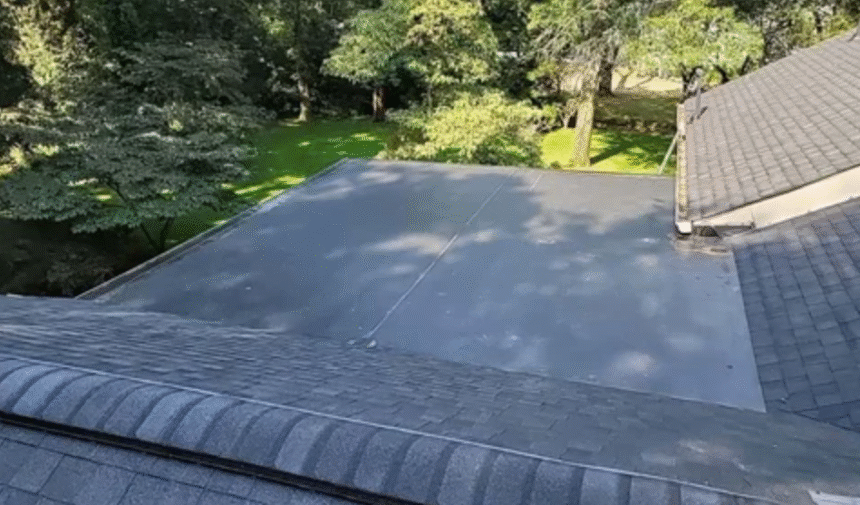Low slope roofing refers to roofs with a 2:12 or lower pitch. For each 12 inches horizontally, the roof does not rise more than 2 inches. Watertight membranes instead of shingles are required for such systems. They are common on commercial buildings and have rigid insulation boards, vapor barriers, and a top membrane. Proper installation must be accomplished, or ponding water is a real problem.
Types of Low Slope Roofing Systems
Low-slope roofs are usually classified in three broad types, each with a construction process and performance profile. The choice will depend on climate, budget, and building use.
- Built-Up Roofing (BUR)Multiple bitumen and reinforcing cloth layers are covered with gravel or a cap sheet. BUR systems have been well-established in the past. They’re very durable, but time-consuming to install. Weight can be an issue if the building is not reinforced.
- Modified BitumenA blend of BUR and modern membranes. These systems are torch-applied or cold-adhered. They’re easier to install than BUR but still excellent regarding durability. They are commonly used for low-sloped or flat commercial roofs that face temperature extremes.
- Single-Ply Membranes (TPO, EPDM, PVC)These are pre-fabricated sheets which are installed in one piece. EPDM is a rubber-based material that is very good at low temperatures. TPO and PVC are heat-welded, UV-reflective, and chemical-resistant. Lightweight and easy installation, but seams must be perfect to avoid leakage.
Benefits Worth Noting
Low-slope roofs are the practical choice for commercial and industrial structures. They are easier to inspect and faster to put up than pitched roofs. The horizontal surface also offers an unobstructed platform upon which HVAC equipment, solar panels, or skylights can be installed. Upfront cost is often less, a boon to builders. In large structures like shopping malls or hospitals, they maximize interior space and allow simple access for upkeep.
Another primary strength is energy efficiency. Cool roof finishes or reflective membranes can be installed on low-slope roofs, decreasing heat gain. That keeps the building interior cooler and saves the cost of air conditioning. Flat roofs are the most efficient to use solar panels on, and therefore, are suitable for collecting renewable energy. Maintenance is also simple; workers do not require ladders and harnesses to reach most areas and do maintenance work.
The Main Challenges
Drainage is the biggest problem. It doesn’t drain away quickly, so the slightest sag causes ponding, which causes leaks, damage to the protective membrane and structure degradation. That is why installation accuracy becomes so vital. Flashing, sealing, and slope design must be flawless.
Foot traffic is another danger. Roofing membrane technicians can puncture the membrane. UV degradation, wind uplift, and thermal movement also accelerate aging on the roof more than sloped systems. Regular inspection is not an option, it’s mandatory.
Maintenance Best Practices
Begin with regularly scheduled inspections twice a year to identify problems early on. On every visit, clean out debris and inspect all seams and drains thoroughly. Be sure to look closely for punctures, particularly around rooftop equipment. After major storms, reinspect locations where ponding could happen.
Second, protective coatings should be applied before damage becomes evident. Preventive maintenance is always cheaper compared to costly repairs. Maintain accurate records of all work done. Proper documentation enhances your case for warranty claims.
Low-sloped roofs are flexible, economical and available yet require care and maintenance that is routine as well as efficient designing. Their effectiveness is based on the proper membrane, good drainage and subsequent maintenance. They are used widely in commerce, and they are becoming popular in residential construction solutions also.







